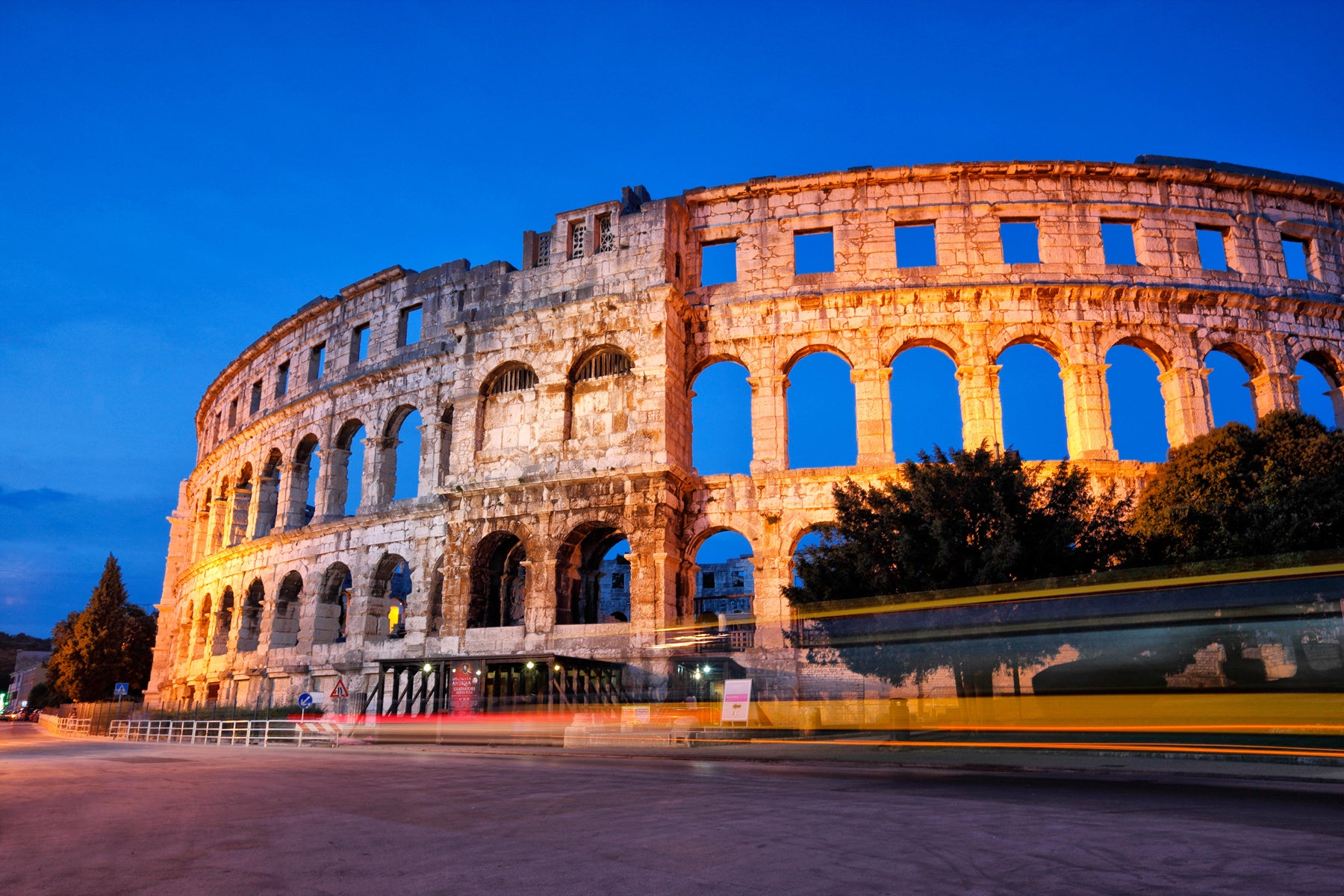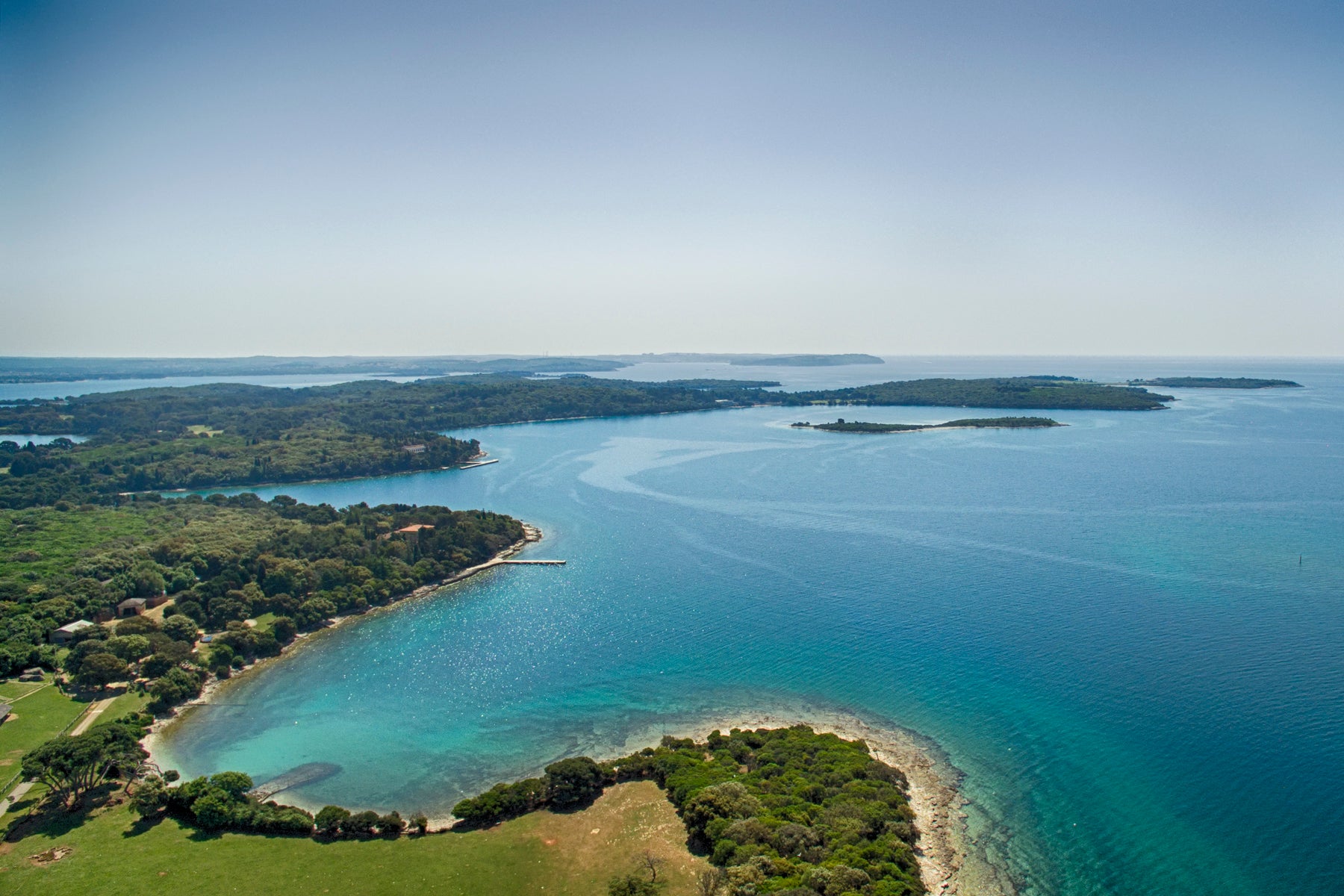Historic Istria: Do as the Romans do in Croatia
From headless statues to a glorious amphitheatre, Istria bears the mark of its former conquerors

As I wander through Pula, I wonder momentarily if the area has been targeted by an eccentric art thief. Several of the statues dotted about the city’s historic centre appear, quite literally, to have lost their heads.
But, I learn, this isn’t the work of some deviant art collector. As in many Roman cities, in ancient times the emperors were overthrown and replaced so abruptly here – and with such frequency – that it could be hard for the citizens to keep up, not to mention the sculptors, who decided it would be practical to create just a body and then periodically fashion a head whenever the situation called for it.
The Romans had a significant influence on Pula, the biggest city in Istria, the westernmost county of Croatia. That influence is perhaps most visible at the remarkably well-preserved amphitheatre in the city centre. Constructed in 1AD, the imposing landmark was once a hotbed of gladiatorial combat, with fights played out in front of up to 20,000 spectators; today, it hosts spectacular events of a different kind in its capacity as an open-air concert venue. Performers including Elton John and Tom Jones have appeared here.
Bordering Slovenia and with a maritime border with Italy, Istria is the Adriatic’s largest peninsula, with more than 500km of coastline. From the seaside town of Fazana (8km north-west of Pula) I take a ferry to the Brijuni archipelago. In 1945, when the Brijuni became part of Yugoslavia, the Communist leader Josip Broz Tito was so taken with the beauty of the 14 islands that he used them as his private summer residence, relocating here for up to six months each year in decadent style.
Marshal Tito died in 1980, but his legacy has been keenly preserved. At 5.6sq km, Veliki Brijun is the biggest island in the group and the location of a safari park that’s home to animals bequeathed to the president by heads of state and his coterie of glamorous friends. The exotic menagerie comprises elephants, zebras and llamas – and even two Shetland ponies, courtesy of our Queen, who dropped in on Tito at his lavish residence in 1972.

In the decades he resided here, the president hosted dignitaries from Gandhi to Gaddafi and celebrities such as Elizabeth Taylor and Richard Burton. Many of these visits are documented in a museum dedicated to the man himself, also on Veliki. Dozens of photographs of the late leader decorate the walls and display cabinets of this intriguing, if eerie, spot, alongside a rather gloomy taxidermy collection.
Back on the mainland I relax by the waterfront in the sun until my stomach starts to rumble. A small fishing port, Fazana offers an abundance of restaurants making the most of this maritime region’s produce. But while seafood dominates the menus, Istria’s pride and joy is its exquisite olive oil.
Whether you’re dropping in on a rustic tavern for a quick bite or indulging in a five-course meal at one of the pricier establishments, you’ll likely be offered a selection of oils, with bread for dipping, upon your arrival. In March, Flos Olei, the specialist guide to the world’s finest extra-virgin olive oils, crowned Istria the best olive region in the world. More than 500 olive growers from 59 countries featured on this year’s list, and more than 50 were based in Istria. Wherever I go, groups of diners seem to give a cursory glance to the restaurant’s wine list before proceeding to spend an inordinate amount of time mulling over the olive oil menu to choose the perfect pairing for their meal.
Tucked away in the small town of Vodnjan, 10km from Pula, is Brist Oil, a sleek and stylish store, where visitors can stock up on the oils produced by the family-run business. I meet Paul O’Grady (not that one), an Irish expat, and his Istrian wife, Lena. The couple look after the day-to-day of the business and offer tours of their six-hectare grove, home to 1,600 trees, which can each produce up to five litres of oil.
The family relies on the “intuition” of Nona Ana, Lena’s 96-year-old grandmother, to select the best trees every season. A team of 40 pickers, mainly women, plucks the olives from the 100-year-old trees and races to get them to the local mill within 40 minutes. This summer Brist will introduce a night-time tour, including a gourmet sunset picnic.
Previously a highly paid architect in Ireland, O’Grady has lived in Croatia for 13 years, including six in Istria. “It’s a beautiful, magical place,” he tells me proudly. “When I’m driving through the vineyards and olive groves, I feel like I’m expecting a Roman legion to march across the road. The place is timeless.”
Join our commenting forum
Join thought-provoking conversations, follow other Independent readers and see their replies
Comments